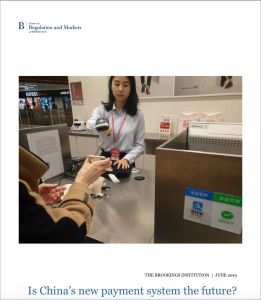Join getAbstract to access the summary!

Join getAbstract to access the summary!
Aaron Klein
Is China’s New Payment System the Future?
Brookings Institution, 2019
What's inside?
China offers new alternatives that could challenge existing payment platforms and providers.
Recommendation
When consumers pay for goods and services with credit cards, credit-card issuers make money on every transaction; “swipe fees” amount to $80 billion per year in the United States alone. Two new payment models from China could threaten those revenues – and oust banks as intermediaries – if those models gain traction in the West. In this intriguing report for financial services professionals and retail executives, economist Aaron Klein examines the explosive growth of the new payment platforms in China and assesses whether they could take hold in mature economies.
Summary
About the Author
Aaron Klein is a fellow in economic studies at the Brookings Institution.


























Comment on this summary